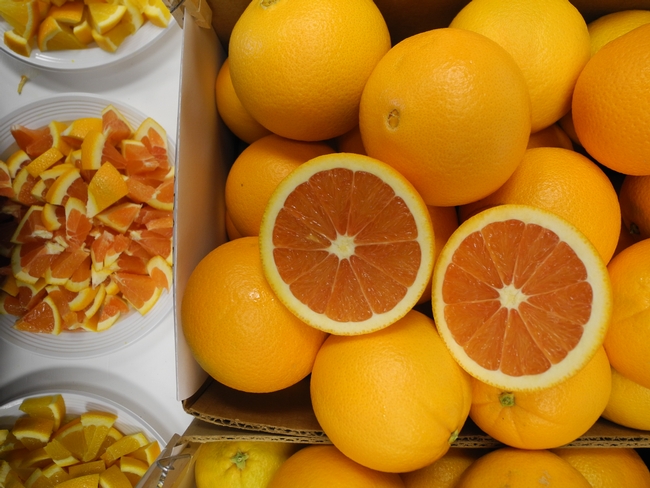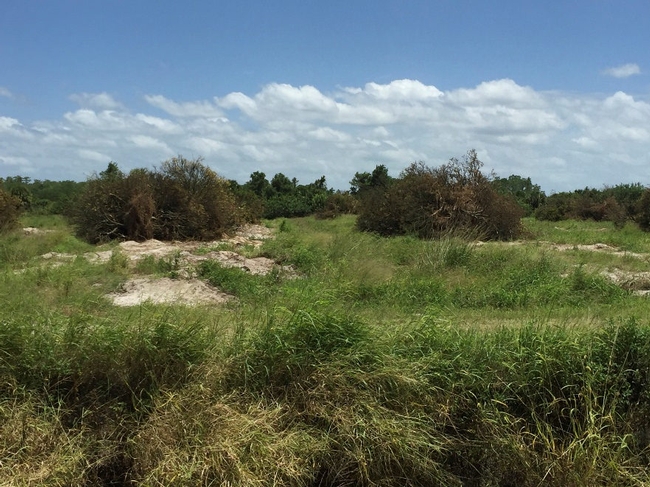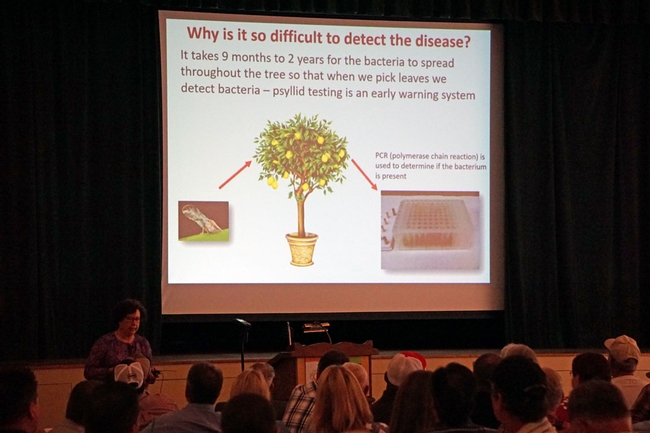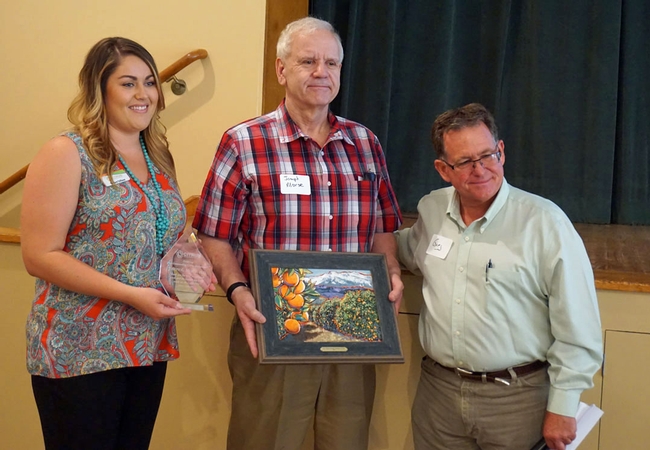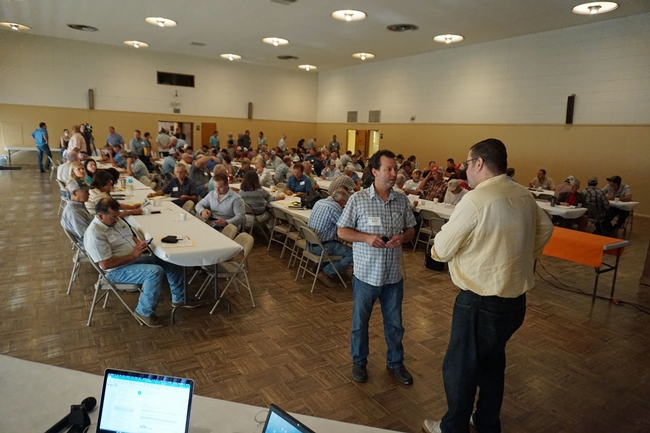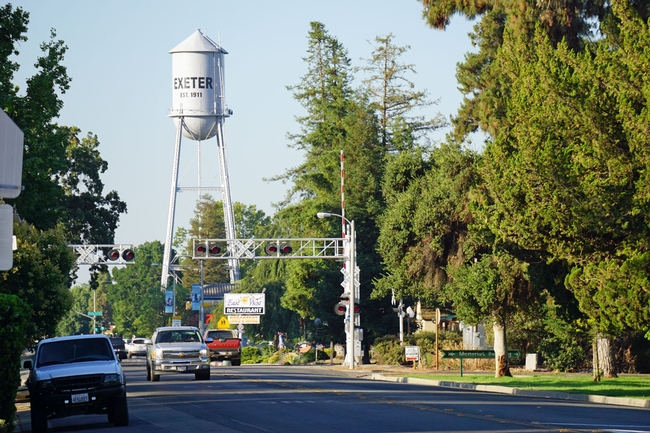
Posts Tagged: Greg Douhan
New UC study outlines costs of growing oranges in the San Joaquin Valley
A new study outlining the costs and returns of establishing and producing navel oranges with low-volume irrigation in the southern San Joaquin Valley has been released by UC Agriculture and Natural Resources, UC Cooperative Extension and the UC Davis Department of Agricultural and Resource Economics.
“A cost study gives a ‘new' grower a better idea of all the costs that are involved with producing the crop,” said co-author Greg Douhan, UC Cooperative Extension citrus advisor for Tulare and Fresno counties.
Real estate agents, land leasers, bankers evaluating loan applications and others can use the cost study to estimate current costs to plant and produce oranges and expected profits.
This study updates an earlier version, using as an example the Cara Cara navel, which is known for its distinctive pink-colored flesh rather than the conventional orange flesh of the Washington navel.
“The Cara Cara has been returning very good prices to growers for the past decade or so and is a relatively new navel,” said co-author Craig Kallsen, UC Cooperative Extension farm advisor in Kern County. “Of course, grower returns are driven by consumer demand. Why consumers like it so much I do not know, but I suspect it is because it tastes good and is different. You cut it and get a pink surprise. Its harvest maturity is similar to that of the Washington navel.”
The updated version takes into consideration “things like inflation, chemical availability, changes in markets both domestic and foreign, governmental regulations and other things,” Kallsen said.
The study is based on a hypothetical farm that consists of 65 contiguous acres onlandin the San Joaquin Valley previously planted to another tree crop. Establishment and production costs are based on 10 acres being planted to oranges. Mature orange trees are grown on 50 acres and the remaining five acres are roads, equipment, shop area and homestead. The grower owns and farms the orchards.
The two major orange varieties grown in the San Joaquin Valley are navels and valencias. Navels are grouped into three types by harvest timing – early, mid and late season. Due to current planting practices, only navels are included in this budget. Cara Cara is the variety of navel oranges currently most commonly planted.
The Cara Cara orange trees are planted double density, 10-by-20-foot spacing, at 218 trees per acre. At this density, it is possible to start harvesting in year 3 or 4. At year 8 or 9, full maturity is achieved and growers begin pruning back every other tree. This allows the grower to maintain yields while at the same time converting the field to 20-by-20 spacing – maximizing yield for a fully mature orchard.
For pest management, the study includes detailed information and links to UC Integrated Pest Management guidelines for citrus. The narrative contains tables of insecticide treatment cycles for establishment and production years.
The section “Exotic Pests of Economic Concern to Citrus Growers” contains information to meet quarantine regulations on exporting oranges from California to countries such as South Korea.
The authors describe the assumptions used to identify current costs for oranges establishment and production, material inputs, cash and non-cash overhead. A ranging analysis table shows profits over a range of prices and yields.
“2021 - Sample Costs to Establish an Orchard and Produce Oranges in the Southern San Joaquin Valley” can be downloaded for free from the UC Davis Department of Agricultural and Resource Economics website at coststudies.ucdavis.edu. Sample cost of production studies for many other commodities are also available for free on the website.
For additional information or an explanation of the calculations used in the studies, refer to the Assumptions section or contact Donald Stewart at (530) 752-4651, destewart@ucdavis.edu or Karen Jetter at (530) 792-8255 or jetter@ucanr.edu. To discuss this study with a UC Cooperative Extension farm advisor, contact your local UC Cooperative Extension office: http://ucanr.edu/County_Offices.
This study was funded in part by the National Institute of Food and Agriculture, U.S. Department of Agriculture, under award numbers 2017-70016-26755 and 2019-70016-29068.
Citrus farmers bracing to battle huanglongbing
Two more trees infected with huanglongbing (HLB) disease were identified and destroyed in the days before UC Cooperative Extension and the Citrus Research Board kicked off their spring Citrus Growers Education Seminar in Exeter June 27. The new infections raise the total number of HLB-infected trees in Los Angeles and Orange counties to 73.
The latest statistic set the stage for spirited discussions about a looming threat that cut Florida citrus production by 60 percent in 15 years. The devastating citrus losses in Florida were recounted by Ed Stover, a plant breeder with USDA Agricultural Research Service in Fort Pierce.
"One of the benefits of coming here is I am reminded how beautiful citrus is," Stover said. "In Florida, there are more than 130,000 acres of abandoned groves." He showed slides of trees with thin canopies, pale leaves and green fruit; in one image the trees were skeletons among tall weeds.
Huanglongbing disease is an incurable condition spread by Asian citrus psyllid (ACP). The psyllid, native of Pakistan, Afghanistan and other Asian regions, was first detected in California in 2008. Everywhere ACP is found, the pests find and spread HLB.
Stover and his colleagues are searching for citrus cultivars that have natural tolerance for the bacteria that causes HLB, but progress is slow. Transgenic citrus, he said, is the best bet for developing citrus with HLB immunity.
"In my opinion, commercial genetically engineered citrus is inevitable, and GE crop concerns will likely decline with time," he said.
In California, the aggressive push to keep psyllid populations low, regulations to limit the spread of psyllids when trucking the fruit, and active scouting for and removal of HLB infected trees in residential areas could buy time for researchers to find a solution before California suffers the fate of Florida citrus growers.
"Be vigilant," Stover said. "As long as you are still making a good return, there is almost no investment too great if it keeps HLB out of California."
Beth Grafton-Cardwell, UCCE citrus entomology specialist and director of the UC Lindcove Research and Extension Center near Exeter, said the prime research in the San Joaquin Valley is aimed at early detection techniques.
Once a tree is infected, it takes nine months to two years for the bacteria to spread throughout the tree, so that when leaves are selected for testing, they detect the bacteria. Capturing and testing psyllids is one way to to find the disease early. Other early detection techniques focus on the microbes, proteins and aromas produced by sick trees.
"These can be measured with leaf test, a VOC (volatile organic compound) sniffer, swab or even dogs," Grafton-Cardwell said. "Scientists are studying every conceivable way to stop the disease."
In the meantime, growers were encouraged to carefully monitor for and treat psyllid populations in their orchards with pesticides. Pesticide treatment recommendations are available on Grafton-Cardwell's Asian Citrus Psyllid Distribution and Management website, http://ucanr.edu/acp.
"We have lots of challenges," Grafton-Cardwell conceded. "We hate disrupting our beautiful integrated pest management program. But monitor your own groves, apply the most effective treatments and remove suspected (infected) trees. Going through the pain up front will save us in the long run."

